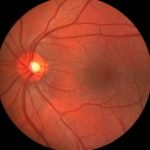Natural Eye Therapies You Can Use Now: 2011 Update
Paul S. Anderson, ND
In this update, I am going to focus on connective tissue health and oxidative stresses in regard to eye disease. Much has been published about common complementary therapies for eye disorders, such as flavonoids, omega-3 fatty acids, and certain nutrient combinations. My objective herein is to emphasize some foundational therapies to augment those already well-known treatments.
Hyaluronic Acid
Hyaluronic acid and its enzyme hyaluronidase were discovered in 1934 and 1940, respectively. They were known to have activity and effect in the eye and soon became the subject of much investigation, starting with a publication by Godtfredsen1 in the British Journal of Ophthalmology. Even in 1949, it was known that hyaluronic acid was implicit in the integrity of the eye and since then has been shown to be useful as a topical medication for corneal repair2 and as an injected medication for retinal disorders.
Over time, the oral absorption of hyaluronic acid has been hotly debated. While it is an accepted treatment in many specialties, its use in medicine in the oral form has been largely ignored. Dermatologic evidence shows that hyaluronic acid topically absorbs to the deep dermis.3 Ophthalmology uses hyaluronic acid as a topical and parenteral agent. Orthopedics uses hyaluronic acid as an interarticular parenteral agent. Animal pharmacokinetic investigations have shown that oral hyaluronic acid is bioavailable in the body and can reach the synovium.4 (It should be noted that the only studies I could locate regarding oral hyaluronic acid kinetics were funded by supplement manufacturers, but the same could be said for some pharmaceutical products as well). While no eye-oriented kinetic studies exist for oral hyaluronic acid, the probability of eye uptake of orally administered hyaluronic acid is plausible.
Uses and Dosage
Hyaluronic acid is used for healing after surgical procedures in the eye and after retinal or vitreous detachment. The typical recommended dosage is 100 mg PO BID.
Cautions
Hyaluronic acid is likely contraindicated in some cancers and in patients receiving aromatase inhibitors. A complete review of the subject by Schor5 can be accessed online.
Alpha Lipoic Acid
While most of us are aware of the use of the thiol alpha lipoic acid for insulin receptor sensitization and its therapeutic benefits in diabetes mellitus, toxicity, and other oxidative conditions, a potential role in open-angle (chronic) glaucoma exists. Likely owing to its ability not only to act as a primary antioxidant but also to reduce other oxidized antioxidants, alpha lipoic acid has the potential to decrease oxidative stress in the body. In an interventional study6 using small oral dosages of alpha lipoic acid (75 or 150 mg daily), an improvement in open-angle glaucoma was noted in more than 45% of patients enrolled. The objective measurements improved universally with both dosages, but the 150-mg dosage showed better liquid discharge.
Uses and Dosage
Alpha lipoic acid is used in diabetic eye conditions and in open-angle glaucoma. The dosage is 300 mg BID (racemic form) or as clinically indicated.
Cautions
Contraindications to alpha lipoic acid include any therapy that would be inhibited by antioxidant activity. Another contraindication is thiol sensitivity.
Glutathione
Multiple publications reinforce the important role of glutathione in health and its deficiency in disease states. A summary of glutathione deficiency and human disease was published in 1994 by White et al,7 and many more articles have followed. One specific to ophthalmology was published in 1992 by Bunin et al8; the study assayed glutathione from the aqueous humor and red blood cells of patients with open-angle glaucoma, as well as from a control group without the disease. In stage 2 and stage 3 glaucoma, all patients had lower glutathione levels than their matched control subjects.
Two previous publications in Naturopathic Doctor News & Review elaborate on the maintenance of glutathione levels in disease9 and on the use of intravenous (IV) glutathione and nutrients in macular degeneration.10 Therefore, I will not restate that material herein.
If using oral supplements to raise glutathione levels in the body, the normal recommendation is to include alpha lipoic acid and N-acetylcysteine, as most oral glutathione supplements have poor absorption. Some new glutathione preparations seem to have better absorption, but if using oral means, it is likely better to use alpha lipoic acid8 and N-acetylcysteine.11
My direct clinical use of glutathione is always parenteral. In patients with no sensitivity to glutathione, we administer IV glutathione directly after a nutrient IV infusion to maximize its bioavailability and activity. Some researchers voice concerns about the cellular bioavailability of IV glutathione, as in some cases it requires disassembly and reassembly in the cell. Interventional trials of IV glutathione starting in the 1990s show that IV glutathione can raise levels of cellular glutathione in animal models.12,13 Human investigations followed and replicated similar data.
In a study14 using low-dose IV glutathione to treat age-related cataract, an improvement in objective measures was reported in 31.25% of subjects. This study used a 300-mg IV dose daily for 6 months, with a placebo control group. The placebo group had no improvement noted. In addition, the random blood glucose and plasma glutathione levels increased among the patients treated with glutathione.
Glutathione therapy requires a great deal of collateral nutrient use as cofactors for reduction and cycling, and we see better results when administered intravenously following infusion of those nutrients (as opposed to pushing it without the IV nutrients). In eye conditions, I typically use the previously published IV formula,10 followed by glutathione. In addition, I generally have the patient take oral alpha lipoic acid, N-acetylcysteine, or both between IV infusions.
Much has been published about glutathione. Therefore, I will truncate the discussion by stating that in my clinical experience no eye condition can be overlooked when considering IV glutathione use.
Uses and Dosage
For oral glutathione therapy, include oral alpha lipoic acid and N-acetylcysteine, as previously published.8,11 For IV glutathione therapy, I generally infuse IV nutrients, followed by 500 mg of IV glutathione, increasing in successive infusions to 2000 mg of IV glutathione.10 Higher doses may be necessary.
Cautions
Thiol sensitivity is a contraindication to glutathione therapy. Another contraindication is sulfite oxidase dysfunction.
Conclusion
Eye disease is common among our patients and is a disturbing event in their lives. In addition to the more commonly considered “eye nutrients” (eg, Vaccinium, lutein, and essential fatty acids), it is wise to consider connective tissue integrity and oxidative status in patients with eye disorders. This brief update should provide therapeutic food for thought.
 Paul S. Anderson, ND is a graduate of National College of Natural Medicine (Portland, Oregon) and practices in Seattle, Washington. He is a professor and cancer researcher at Bastyr University, where he teaches advanced naturopathic therapeutics and advanced intravenous therapy courses. His research concentrates on intravenous therapies and their effects on cancer and chronic disease. He also teaches board reviews for the NPLEX (Naturopathic Physicians Licensing Examinations), as well as many continuing medical education classes for physicians.
Paul S. Anderson, ND is a graduate of National College of Natural Medicine (Portland, Oregon) and practices in Seattle, Washington. He is a professor and cancer researcher at Bastyr University, where he teaches advanced naturopathic therapeutics and advanced intravenous therapy courses. His research concentrates on intravenous therapies and their effects on cancer and chronic disease. He also teaches board reviews for the NPLEX (Naturopathic Physicians Licensing Examinations), as well as many continuing medical education classes for physicians.
References
- Godtfredsen E. Investigations into hyaluronic acid and hyaluronidase in the subretinal fluid in retinal detachment, partly due to ruptures and partly secondary to malignant choroidal melanoma: preliminary report suggesting a new hypothesis concerning the pathogenesis of retinal detachment. Br J Ophthalmol. 1949;33(12):721-732.
- Yokoi N, Komuro A, Nishida K, Kinoshita S. Effectiveness of hyaluronan on corneal epithelial barrier function in dry eye. Br J Ophthalmol. 1997;81(7):533-536.
- Brown TJ, Alcorn D, Fraser JR. Absorption of hyaluronan applied to the surface of intact skin. J Invest Dermatol. 1999;113(5):740-746.
- Schauss AG, Balogh L, Polyak A, Mathe D, Kiraly R, Janoki G. Absorption, distribution and excretion of 99mtechnetium labeled hyaluronan after single oral doses in rats and beagle dogs. FASEB J. 2004;18(4):A150-A151. Abstract 129.4.
- Schor J. Hyaluronic acid: not with cancer, never with aromatase inhibitors. http://www.denvernaturopathic.com/news/hyaluronicacid.html. Accessed August 11, 2011.
- Filina AA, Davydova NG, Endrikhovskiĭ SN, Shamshinova AM. Lipoic acid as a means of metabolic therapy of open-angle glaucoma [in Russian]. Vestn Oftalmol. 1995;111(4):6-8.
- White AC, Thannickal VJ, Fanburg BL. Glutathione deficiency in human disease. J Nutr Biochem. 1994;5:218-226.
- Bunin AI, Filina AA, Erichev VP. A glutathione deficiency in open-angle glaucoma and the approaches to its correction [in Russian]. Vestn Oftalmol. 1992;108(4-6):13-15.
- Anderson PS. Vis medicatrix naturae: cardiovascular therapy update 2009. NDNR. 2009;5(10). [BONNIE TO CONFIRM TITLE AND ADD PAGE NUMBER(S).]
- Anderson PS. Age-related macular degeneration update. NDNR. 2007;3(7).[BONNIE TO CONFIRM TITLE AND ADD PAGE NUMBER(S).]
- Gibson KR, Winterburn TJ, Barrett F, Sharma S, MacRury SM, Megson IL. Therapeutic potential of N-acetylcysteine as an antiplatelet agent in patients with type-2 diabetes. Cardiovasc Diabetol. 2011;10:e43. http://www.ncbi.nlm.nih.gov/pmc/articles/PMC3120650/?tool=pubmed. Accessed August 11, 2011.
- Robinson MK, Ahn MS, Rounds JD, Cook JA, Jacobs DO, Wilmore DW. Parenteral glutathione monoester enhances tissue antioxidant stores. JPEN J Parenter Enteral Nutr. 1992;16(5):413-418.
- Aebi S, Lauterburg BH. Divergent effects of intravenous GSH and cysteine on renal and hepatic GSH. Am J Physiol. 1992;263(2, pt 2):R348-R352.
- Costagliola C, Russo V, Scibelli G, Iuliano G. Effect of reduced glutathione parenteral administration on the progression of cataract in elderly subject: six-months follow-up. InterNet J Ophthalmol. 1996;1:1-6. http://www.unich.it/injo/196.htm. Accessed August 11, 2011.










